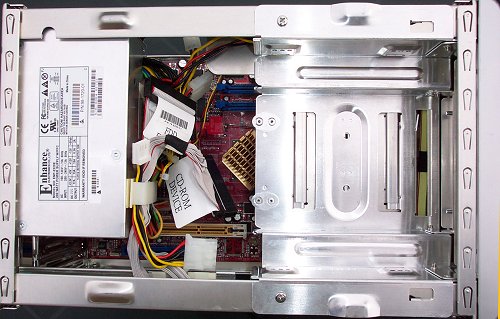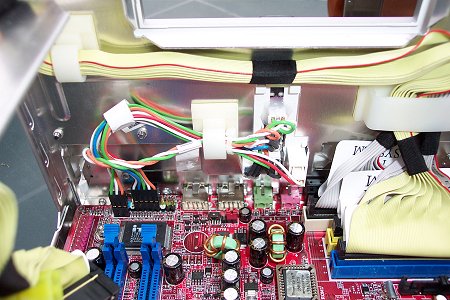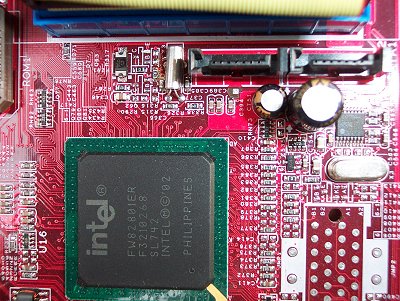Internal I
Due to their limited size, it's even more important for a manufacturer to construct a SFF system with the utmost care and attention. It's expected that regular folk, i.e. non-nerds, will buy and operate these systems, so ensuring that internal building is as easy as can be is of naturally high priority.
Biostar uses a Soltek-like internal structure. A drive cage on the right and a PSU on the left. Shuttle now chooses to mount the PSU along one side. There's enough room between the PSU and cage for a standard optical drive to fit in with ease, and the cage itself is removed via two screws on either side.

Looking at the PSU first, it's usually either Enhance or ACHME that provide the power source. Enhance's 220w model should provide sufficient power for the expected components, but let's not forget that the motherboard will accept a 3.2GHz Northwood Pentium 4 and Radeon 9800PRO with ease. It's not just the total rating, it's also depends upon the quality of the PSU itself. We noticed that this sample developed a high-pitched squeaking sound when placed under load. It wasn't apparent initially, it just got worse over time and stress, so much so that it become irritating.

The drive cage is interesting. It has internal space for a 5.25" drive, a 3.5" drive that's usually the floppy but could be a second hard drive, and a sideways-mounted hard drive. Mounting a hard drive sideways affords greater internal room than the normal location, and the iDEQ 200T, at 210mm x 323mm x 187mm, is large enough to hold it either way. What you see above slides into the chassis with the minimum of fuss. Decent thinking, again. It's larger than a standard Shuttle XPC, but it doesn't feel too 'big'.

The above shot highlights the front of the iDEQ 200T as seen internally. What's special is that Biostar routes the cabling for you, and it's done exceptionally well. Cables are perfectly routed down the front and sides, so much so that the iDEQ 200T is comfortably the easiest SFF that I've personally worked with. The cables are of the perfect length, too, such that they fit flush to the appropriate devices. This may sound trivial, but believe me, when you've personally reviewed around 10 SFF systems, ease of installation is your number one priority. Full marks to Biostar here.


Here's a shot of the cooler and PSU removed. Notice the efficient cabling on all sides, which gives one plenty of room to work with. No more reaching, groping and uttering unmentionables when a hard drive's cable won't quite reach. The motherboard itself, a Biostar P4TBA, uses the proven combination of the i865G Springdale North Bridge and ICH5R South Bridge to decent effect. In a nutshell, the i865G supports every Socket-478 CPU available, be it a 100, 133 or 200FSB version. Further, due to its dual-channel memory architecture, it can output a potential 6.4GB/s of bandwidth at 200FSB. It's cooled by a stylish passive heatsink. Lots of bandwidth is useful as the G variant contains Intel's Extreme Graphics 2 integrated video. We'll discuss how it impacts upon performance later.
The ICH5R is Intel's premier consumer-level South Bridge, and it supports, amongst other thing, 8 USB2.0 ports and on-chip SATA storage with RAID0 and RAID1 support. The two SATA ports that it services can be seen in the right-hand picture. SATA is perfect for SFF systems, as the wires are thin and flexible. SATA drives are available at a very small price premium over regular PATA now, too. One little point before we move on. The clear CMOS jumper is located midway up the motherboard and uses a standard jumper to short two pins. It' kind of hard to get to with components and cages in place, and an ABIT-style big-headed jumper would have been an ideal choice. It's always a little frustrating when a jumper falls out on to a motherboard and is hard to get to.









